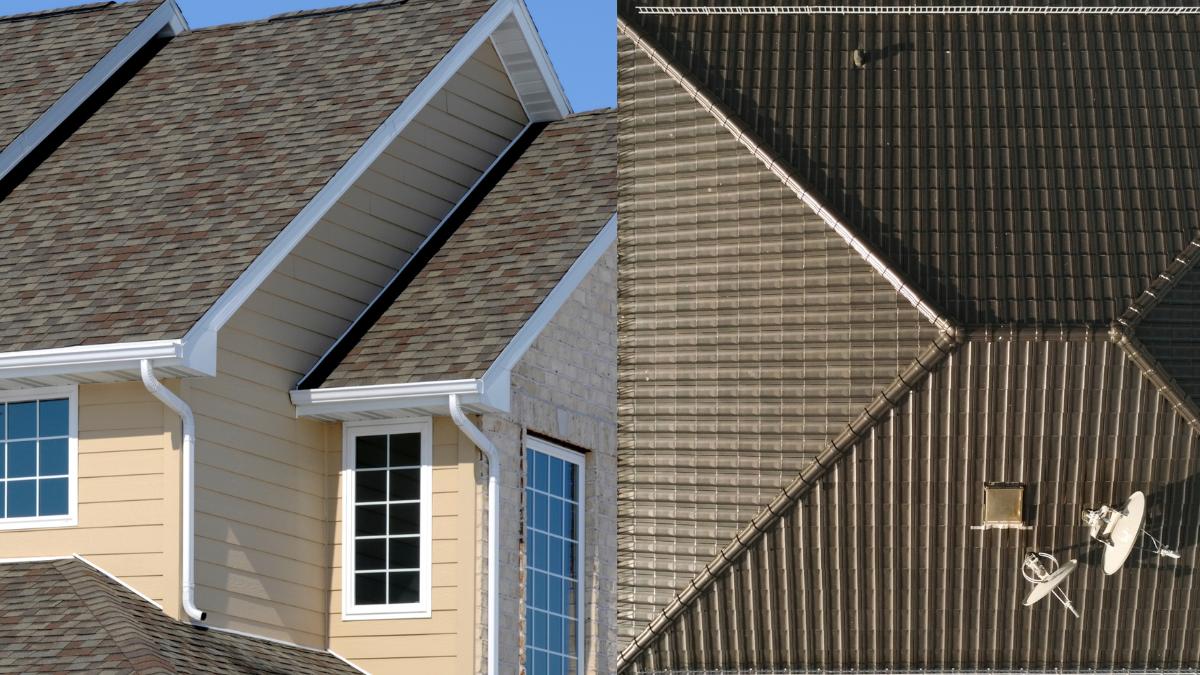The roof over your head isn’t just a cover—it’s your first defense against everything nature throws at your home. When it comes to choosing between a hip vs gable roof, the decision could mean the difference between lasting protection and costly repairs. Your local weather, your budget, and the future value of your home all hinge on making the right call. Let’s break it down clearly so you know exactly what you’re choosing—and why it matters more than you might think.
💡Key takeaways:
- Hip roofs offer superior wind resistance and are ideal for areas prone to hurricanes and high winds.
- Gable roofs are cost-effective, easier to ventilate, and perform well in regions with heavy rain or snow.
- Building costs, climate, architectural style, and long-term durability are key factors when choosing between a hip and gable roof.
- Choosing the right roof can protect your home investment and prevent future expensive repairs.
Hip vs Gable Roof At A Glance
| Feature | Hip Roof | Gable Roof |
|---|---|---|
| Best For | High-wind or hurricane-prone areas | Areas with heavy rain or snow |
| Cost | Higher | Lower |
| Attic Space | Smaller | Larger |
| Ventilation | Needs additional vents | Natural airflow |
| Aesthetic | Modern, upscale look | Traditional, simple look |
| Wind Resistance | Excellent | Moderate (needs reinforcement) |
| Build Complexity | Complex | Simple |
What is a Gable Roof?
A gable roof has two sloping sides that meet at a central ridge, forming a classic triangular shape. It’s one of the most recognizable roof types you’ll see in neighborhoods across the U.S.
Best for:
- Homes in areas with heavy rain or snowfall.
- Those who want a more affordable and straightforward roofing option.
Advantages:
- Lower construction costs.
- Easy to ventilate.
- Creates extra attic space or room for vaulted ceilings.
- Quick water and snow runoff.
Disadvantages:
- Open gable ends can act like sails in storms.
- Vulnerable to strong winds unless properly braced.
What is a Hip Roof?
A hip roof slopes down on all four sides, creating a pyramid or tent-like shape. It offers exceptional strength and stability, making it ideal for harsh weather areas.
Best for:
- Homes in coastal regions, hurricane zones, and windy areas.
Advantages:
- Extremely wind-resistant.
- Solid, balanced appearance.
- Performs well under snow load because of its sloped sides.
Disadvantages:
- Slightly more complicated ventilation systems.
- Higher cost due to more materials and labor.
- Limited attic or ceiling height.
Climate Matters: Which Roof Works Best Where?
Hip Roof
- Best for: Coastal areas, Southern U.S., Florida, Gulf Coast.
- Why: The four sloping sides deflect wind in storms, reducing the chance of uplift.
Gable Roof
- Best for: Northern U.S., mountain regions, places with heavy rain or snow.
- Why: Snow and rain slide right off, reducing stress on the roof structure.
✅ Pro Tip: If you live in Tornado Alley or near the coast, a hip roof is often the safer investment.
Real-World Costs: Hip Roof vs Gable Roof
Here’s a rough idea of what you might pay:
| Roof Type | Average Cost (Installed) |
|---|---|
| Gable Roof | $8,000 – $16,000 |
| Hip Roof | $12,000 – $24,000 |
Cost Factors to Consider:
- Roof size and pitch: Steeper roofs cost more.
- Material choice: Asphalt shingles, metal, tile, and more.
- Labor rates: Skilled roofing labor varies by region.
- Complexity: Hip roofs require more framing, more cuts, and more installation time.
Common Mistakes to Avoid
- Building a gable roof without wind bracing in windy climates.
- Skipping additional ventilation in hip roof designs.
- Underestimating labor costs for complex hip roof framing.
- Choosing based on style alone without considering weather risks.
Which Roof is Best for You?
- Pick a Gable Roof if:
You want a cost-effective, traditional roof that drains snow and rain efficiently. Ideal if you’re building in a region with cold winters or heavy rainfall. - Pick a Hip Roof if:
You live in a region prone to high winds or hurricanes and are willing to invest a little more upfront for long-term stability and better storm protection.
✅ Final Thought: Think about your local weather first. The wrong roof style can cost you thousands in future repairs.
Hip vs Gable Roof FAQs
A hip roof slopes on all four sides for better wind resistance, while a gable roof has two slopes that form a triangle, offering more attic space and easier ventilation.
Gable roofs are generally cheaper due to their simpler construction and fewer materials needed.
Hip roofs are better suited for high-wind or hurricane-prone areas because their sloped sides help deflect wind from all directions.
Yes, many custom homes use a combination of hip and gable designs to balance aesthetics and functionality.
Gable roofs are typically better in snowy regions because their steep pitch helps snow slide off easily.
Final words
Picking between a hip vs gable roof isn’t just about what looks good from the street—it’s about choosing long-term strength, safety, and peace of mind. Understand your local risks, think beyond upfront costs, and choose the roof style that’s built to stand up to your environment. A smart choice today could save you thousands tomorrow—and keep your home solid for generations to come.
You might also like:

